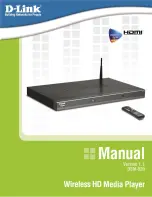
page
Figure 5: LC7 system using summing functions – 2-way front plus subwoofer
Ground Connection:
Use the same gauge wire as you did for the
positive connector and run it from the “Ground” connector on your LC7
to the negative terminal of the battery, a ground bus, or a verified ground
location. The factory head unit ground is not a good ground!
Remote In:
Your LC7 is equipped with GTO signal sensing which al-
lows it to turn on when it detects a signal at the Main speaker-level inputs
so you may not need to use the “Remote In” feature.
Connect a 22 to 18
gauge wire from the source unit’s remote turn-on or other trigger to the
Remote connector on the LC7.
Remote Out:
If you are going to use the LC7 to turn on any external
signal processors or amplifiers, connect an 18 to 22 gauge wire from
the Remote Out on the LC7 to the remote turn-on of the processors or
amplifiers. Depending upon how many external devices you are turning
on, you may need to connect this wire to a relay and route 12 volts from
another source.
Once the electrical connections are complete, you will want to re-
connect the negative terminal to your battery. However continue to act
positively!
LC7 Audio Wiring
The LC7 needs to be installed in the signal path after your factory
source unit or amplifier but definitely before your aftermarket amplifiers
and/or any signal processors. You may already have guessed there are
numerous ways to configure the LC7 in your audio system so we recom-
mend you spend a little quality time planning out your system and even
sketching it out on paper.
Interfacing with factory-installed radio


































